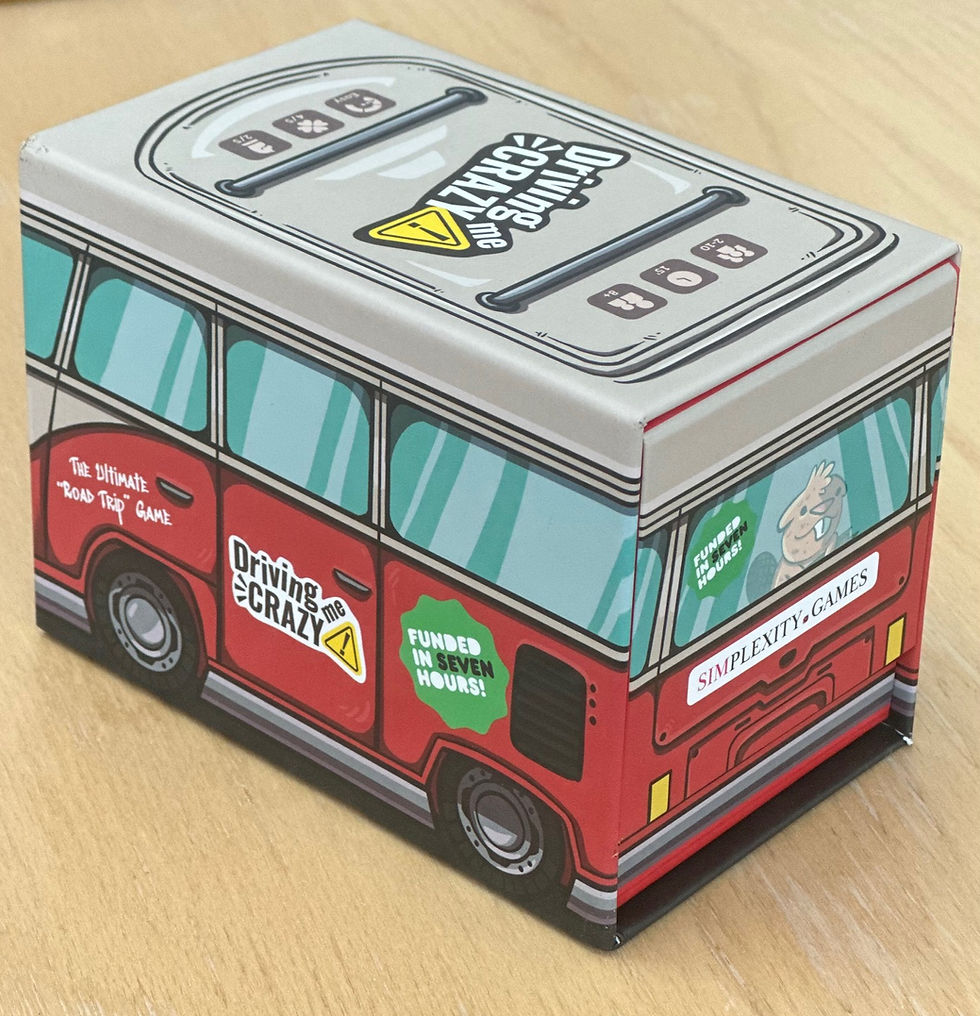Magical Friends and How to Summon Them
- Selwyn Ward

- Sep 27, 2021
- 4 min read
Updated: Sep 6, 2022
We first reviewed Magical Friends and How to Summon Them a year ago ahead of its initial Kickstarter launch. Now Magical Friends is back, and this new version has been both expanded and streamlined.
In this enchanting race game from Shelf Buster, the 2-5 players (originally the game took only up four) are wizards who are due to attend a party in the village tavern. They are competing to show who will be present with the most 'magical friends'. It's easy enough to summon your friends but then you have to get them to the tavern and maybe try to take out en route some of your rivals' 'magical friends' who are making a similar journey...

Magical Friends is played over eight rounds, with extra conditions to accelerate movement introduced in the last two rounds. It's played on a board that is modified with double-sided modular pieces, so you're not always playing on the same board layout. The board shows several different routes between the wizards' towers and the tavern. Each turn, players will draft a card from the display to summon that 'magical friend' to their team. You take the corresponding standee, add an overlay that identifies it as yours, and you place it on your tower. The cards for each 'magical friend' specify the basic movement that can be applied to this and to your previous summonses. They give the creature's size (small, medium or large) and the creature's alignment (good, neutral, evil). These come into play when resolving interactions between players' 'magical friends' when they come into contact with one another en route to the tavern. There may be a wand icon, indicating a magical effect or power, and there will be text describing the creature's power or special ability. For example, the Gryphon can slay any evil creature it moves on; the Troll can slay any small or medium creature he moves on. If one of your summonses gets slain, they are removed from the game but you do get a single-use 'pity power' card by way of compensation. It can be used to give a bonus of two steps movement to any of your summonses.


Players each have an identical hand of 11 'artifact' cards. These are used to determine player order each round, with the highest number going first. Lower number cards also have icons that permit bonus actions, so you have to balance out desire to go early against the benefit of a bonus that may, for example, give you extra movement. You might subsequently recruit the Djinn as a 'magical friend' with the magical ability of allowing you to recover artifact cards from your discard pile but you should normally think of these cards as single use - so if you play your 11 now to guarantee first pick of the summonses and first move, you won't have the 11 card available to you in any future rounds.
Aside from the bidding metagame in the use of artifact cards, the joy of Klemens Luger's design in Magical Friends is in discovering the interaction between the various summonses - and now the number of creatures has been upped to 50 (it was 40 in the earlier version). Just as there's a trade off between artifact cards that give you early turn order and the lower numbers that give you bonuses, so too the choice of summons will probably involve a trade off between movement and special ability. The Phoenix has the attractive power of being able to slay any big creatures he moves on, plus it automatically reincarnates if it is slain, but it only has a single three-step movement. On the other hand, the Werewolf merely has the power to switch alignment but it gives three steps of movement to three of your 'magical friends'. Which is the better choice? Much will depend on what summonses are already in play and where they are on the board. Either way, it's a judgement call; there's little in this game that's down to chance.
We've had a huge amount of fun with Magical Friends and How to Summon Them. It's appealed as a family game - thematically especially popular with Harry Potter fans - but it's proved equally to appeal to experienced gamers who've particularly enjoyed building a synergistic team of summonses whose powers and abilities play well off each other. Even tho' what we've been playing is just a preview prototype, we've been impressed with the extra thought that's gone into the design, including boxing the summons standees in a pull-out punchboard mount. The artwork of Hannah Flattinger and Tran Khiet Van Ho gives the game a whimsical feel so that it even appeals to those players who might otherwise be averse to mechanics that involve a 'take that' element.
Magical Friends and How to Summon Them is live now on Kickstarter. If you click here, it will magically transport you to the KS campaign!
(Review by Selwyn Ward)
#MagicalFriends #HowtoSummonThem #summons #magic #fantasy #racegame #takethat #carddrafting #bidding




